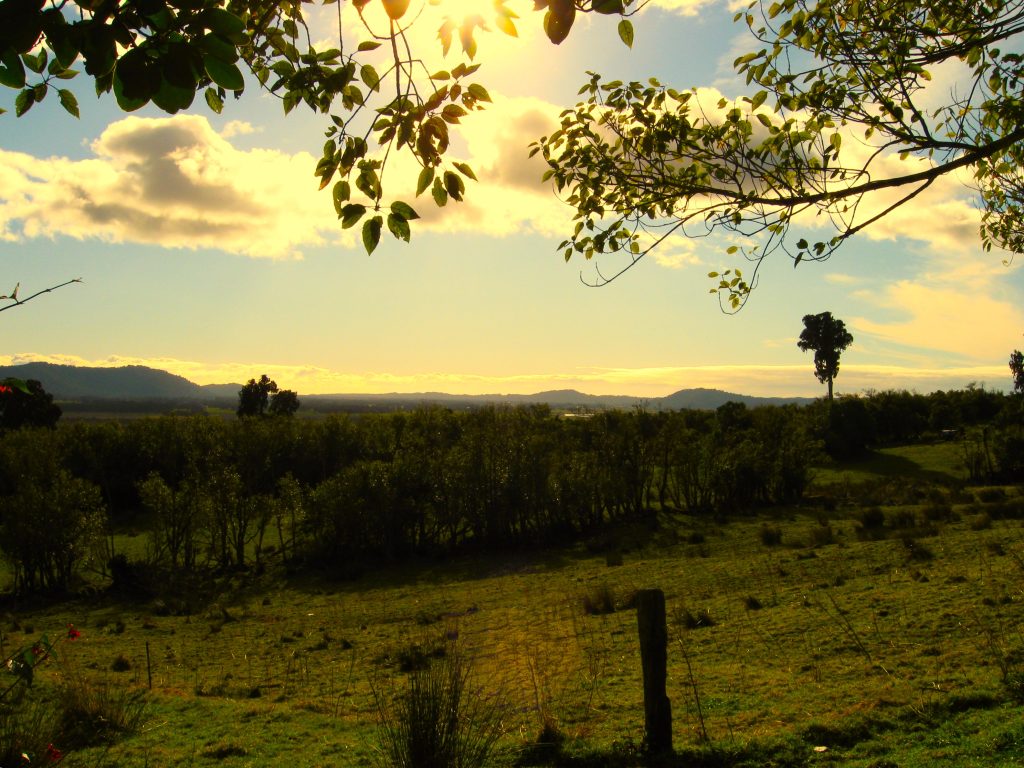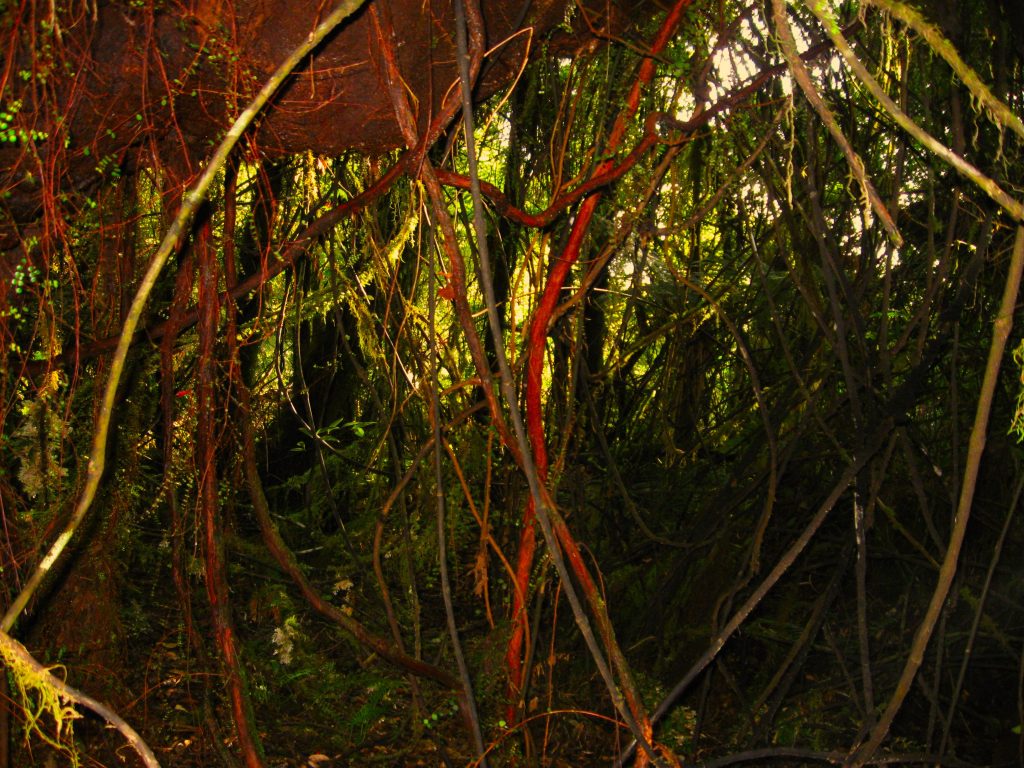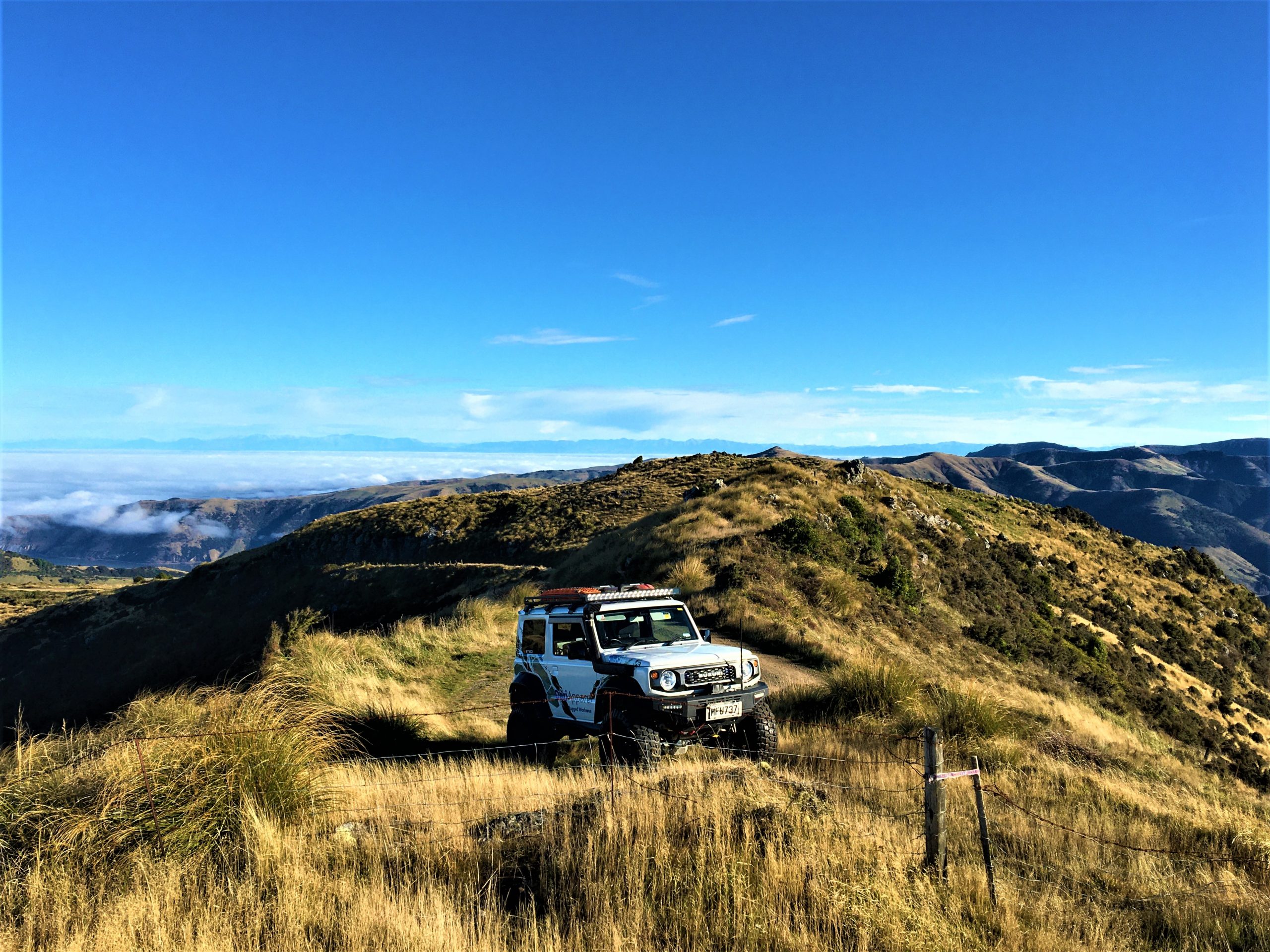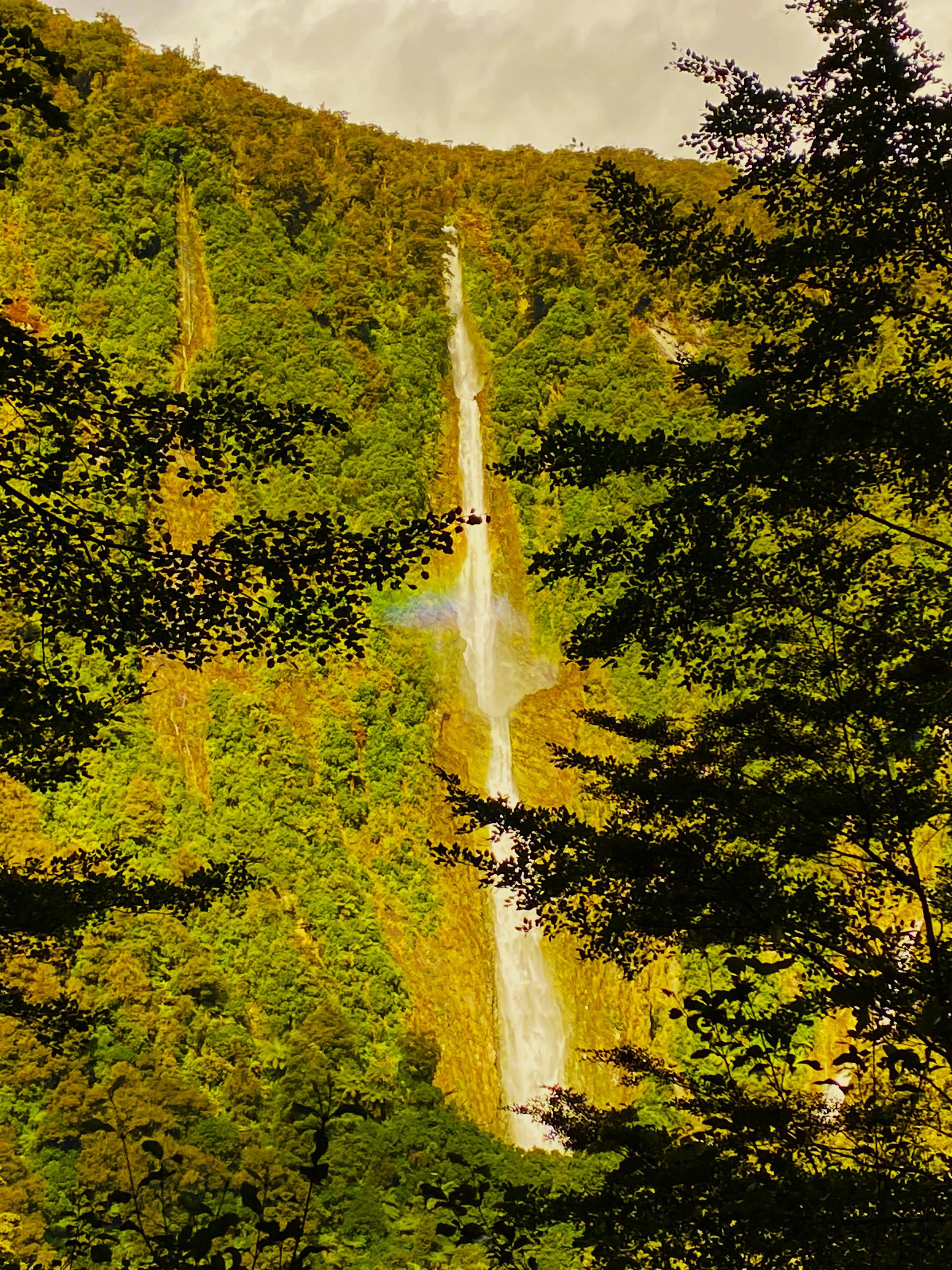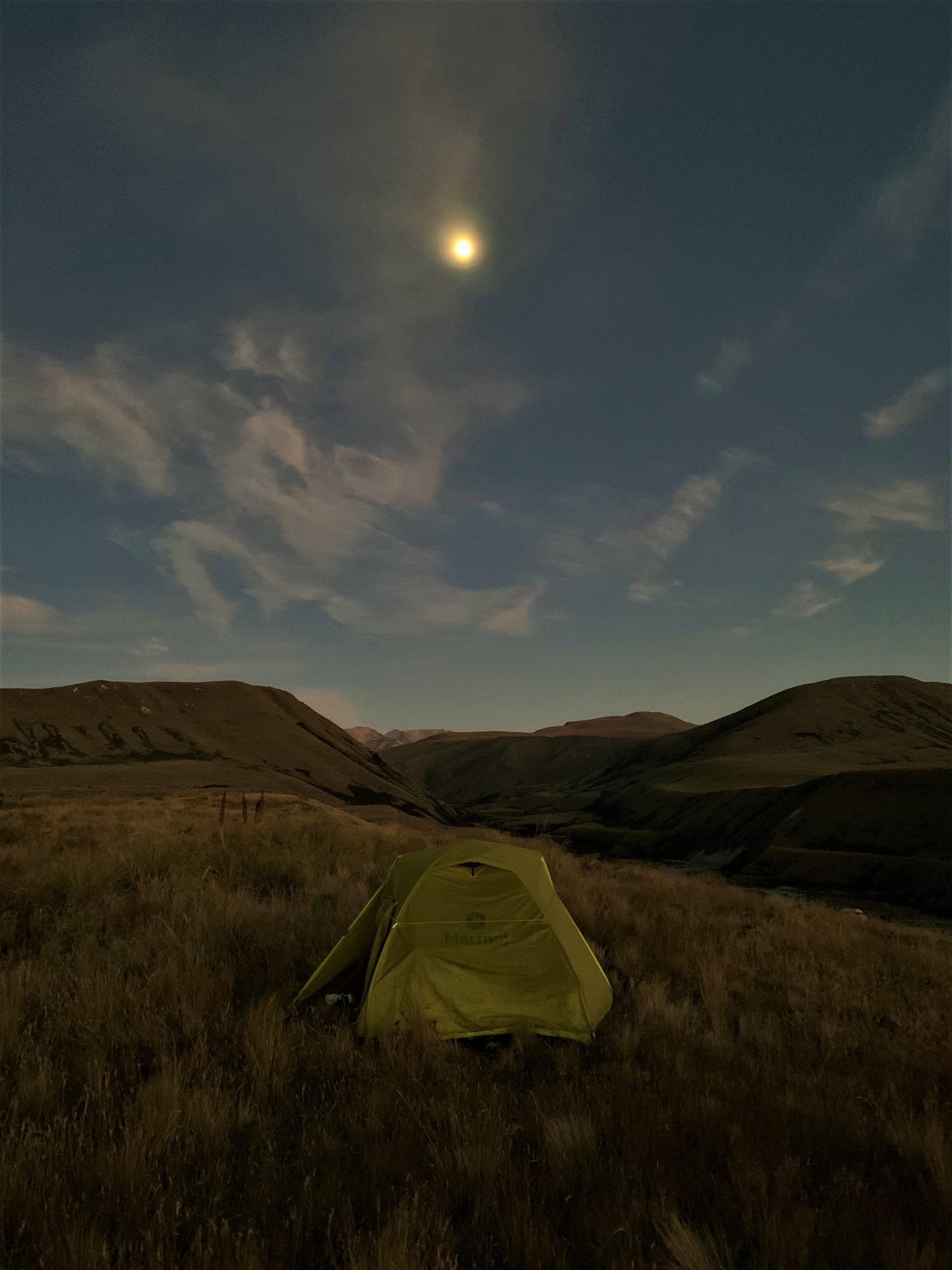“On a Mish” #179 Follow a Man Named John Smith (Part Two). Dry Creek (Little Man Creek). Whataroa. 21.7.2009. After visiting certain locations many times over for well over a decade I can say it has been both reassuring and disappointing at the same time. On one hand I have seen the result of many hours of hard work fighting against the introduced pests. And then on the other hand I have seen the devastation caused by creatures that were brought to Aotearoa by mistake or to help reduce the other introduced pests. The fight still rages on today, and while I haven’t done much, I can say I have done a little bit when it comes to vermin eradication in Aotearoa…
By the time we got to our base of operations in Te Taho near Whataroa Village it was the middle of the night. Our base was going to be up an old track to the edge of the property beside Dry Creek (Little Man Creek). Low clouds blocked any chance of seeing our surroundings, but we were tired from the drive and needed to replenish our energy reserves for the job ahead.
Early-ish the next day the clouds had cleared and a good frost had formed not only on everything outside, but also on the inside of the windows of the camper we called home. It was cold but the excitement of doing something completely different kept me warm as I wondered around looking at the spectacular Adams Range.
For the next couple of days, I leant the ways of the possumer. When I was told about the job Ray mentioned that I needed to bring a claw-hammer. At first, I thought we might be doing some building, but John Smith demonstrated what the hammer was for when we came across our first possum. I don’t really need to go into any details, so let’s just say that the hammer was used for ‘pest control’.
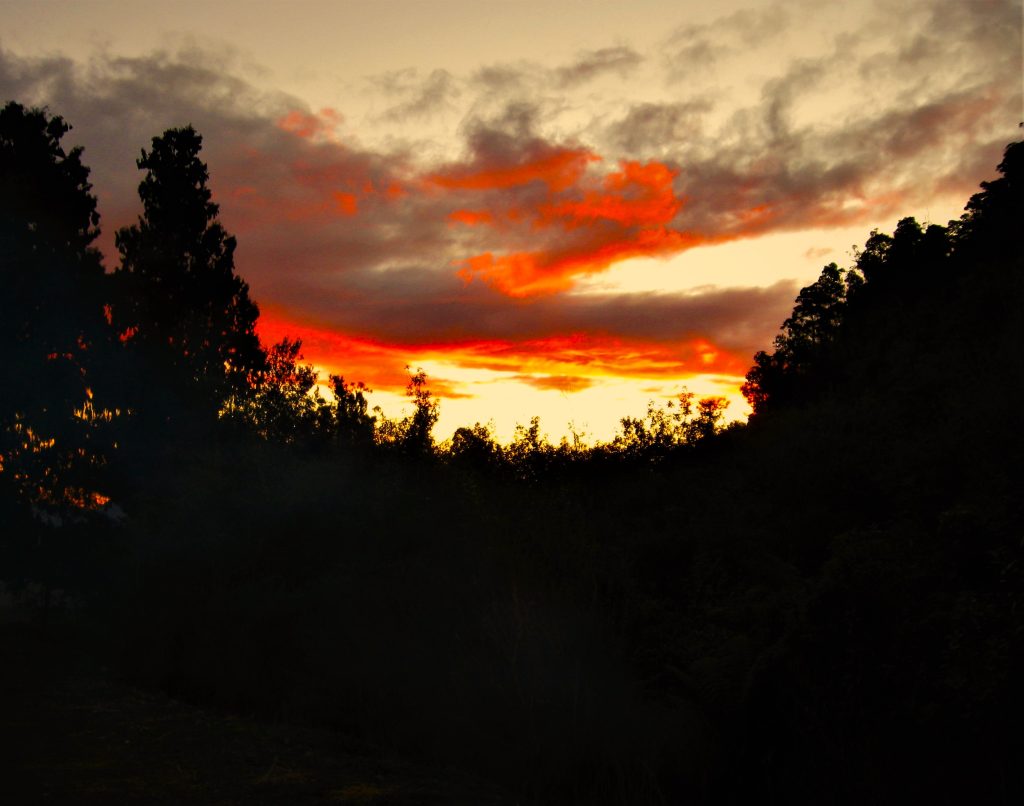
For the next eight days we would travel around the Whataroa area laying traps and then returning to count the numbers of possums in the area. We lucked out with the weather for most of the time, this was very good considering how dense the West Coast bush is. Mud wasn’t going to be an issue until the last couple of days.
As this was the winter after my first season guiding, I had a chance to reintroduce myself to the plants I had learnt about during the months out on the Routeburn Track. One plant I hadn’t had a chance to spend much time with was Sapplejack. Supplejack is an unbreakable vine that is weaved throughout the forests on the coasts. It is like someone intertwined a bunch of electrical cables together, and if you find yourself tangled there is no way your will be able to get yourself out with brute force. There were places where I had to remember John Smiths wise words of don’t fight the forest, work your way through it. The classic ‘bush-bashing’ doesn’t work when the bush is unbashable!
As said, it was only on the last couple of days that we encountered rain, and this changed the mood in the camper. We had had it so good and now we were getting a dose of what is so common on the West Coast. With rain getting heavier by the hour, we laid our last traps and then it was time to head home before we returned to record numbers after the area had been laced with on of Ray’s baits. After another round of bush bashing and trapping, we returned the numbers to Ray only to find that the result of many days work in the bush was ‘inconclusive’. To Ray and John Smith this was normal, but to me it seemed a little bit pointless, but as I would learn this is how research science works and for us it was time to move on to the next wild project… Rabbit eradication in the Mackenzie Country…
